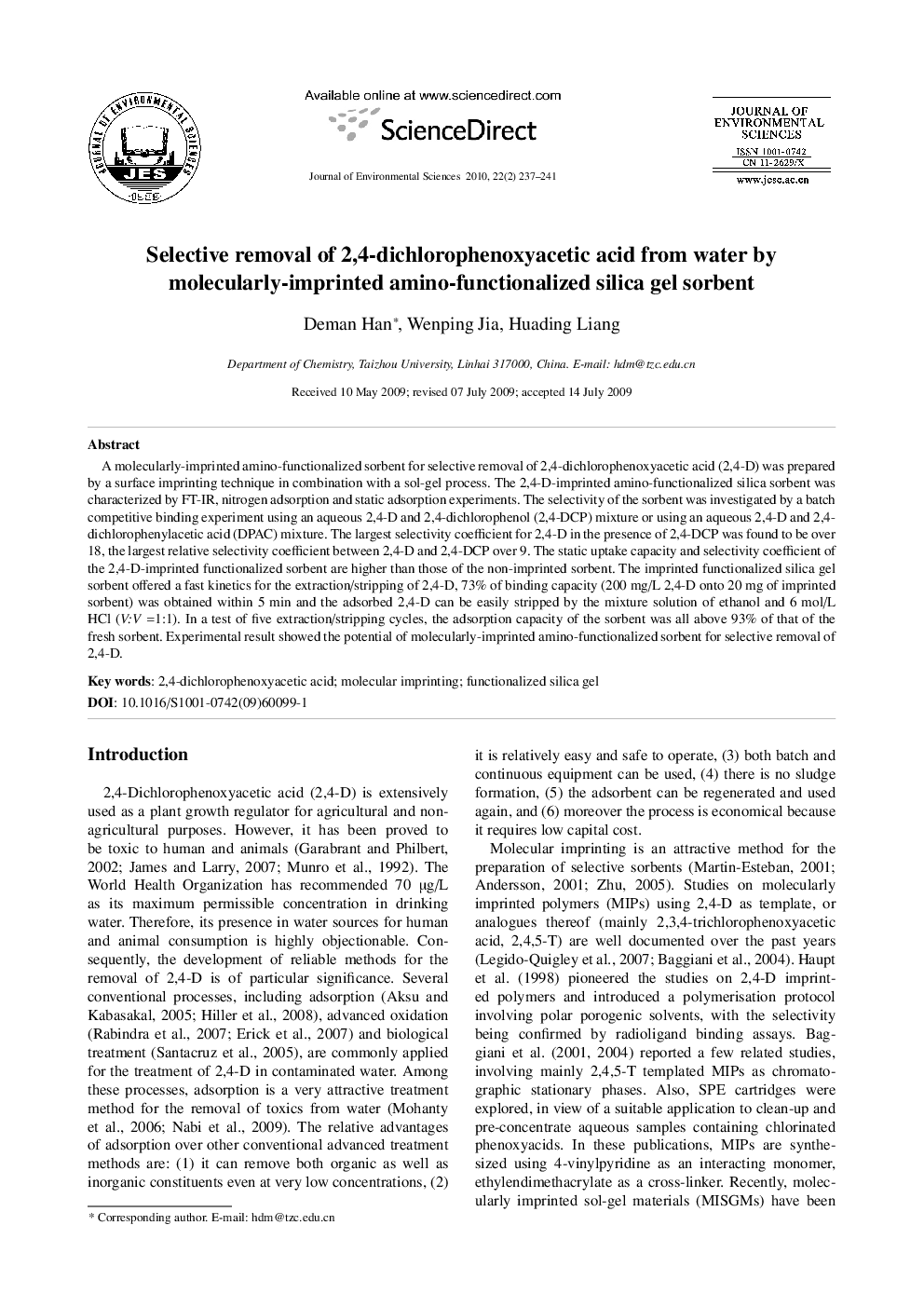| کد مقاله | کد نشریه | سال انتشار | مقاله انگلیسی | نسخه تمام متن |
|---|---|---|---|---|
| 4456053 | 1312541 | 2010 | 5 صفحه PDF | دانلود رایگان |

A molecularly-imprinted amino-functionalized sorbent for selective removal of 2,4-dichlorophenoxyacetic acid (2,4-D) was prepared by a surface imprinting technique in combination with a sol-gel process. The 2,4-D-imprinted amino-functionalized silica sorbent was characterized by FT-IR, nitrogen adsorption and static adsorption experiments. The selectivity of the sorbent was investigated by a batch competitive binding experiment using an aqueous 2,4-D and 2,4-dichlorophenol (2,4-DCP) mixture or using an aqueous 2,4-D and 2,4-dichlorophenylacetic acid (DPAC) mixture. The largest selectivity coefficient for 2,4-D in the presence of 2,4-DCP was found to be over 18, the largest relative selectivity coefficient between 2,4-D and 2,4-DCP over 9. The static uptake capacity and selectivity coefficient of the 2,4-D-imprinted functionalized sorbent are higher than those of the non-imprinted sorbent. The imprinted functionalized silica gel sorbent offered a fast kinetics for the extraction/stripping of 2,4-D, 73% of binding capacity (200 mg/L 2,4-D onto 20 mg of imprinted sorbent) was obtained within 5 min and the adsorbed 2,4-D can be easily stripped by the mixture solution of ethanol and 6 mol/L HCl (V:V =1:1). In a test of five extraction/stripping cycles, the adsorption capacity of the sorbent was all above 93% of that of the fresh sorbent. Experimental result showed the potential of molecularly-imprinted amino-functionalized sorbent for selective removal of 2,4-D.
Journal: Journal of Environmental Sciences - Volume 22, Issue 2, 2010, Pages 237-241